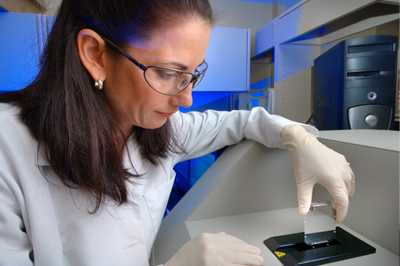AMD Projects: Deadly Disease Databases
Whole genome analysis and database development for anthrax (Bacillus anthracis), melioidosis (Burkholderia pseudomallei), and Brucellosis (Brucella spp.)
2017 Project Completion
This project reached a successful conclusion in 2017 with the launch of the Microbial Gene Atlas, or MiGA. Developed in partnership with Georgia Institute of Technology. MiGA allows scientists around the world to view, share, and compare deadly strains of bacteria, such as anthrax, so we can more rapidly determine whether a disease outbreak is the result of a natural occurrence or linked to bioterrorism. MiGA gives scientists the ability to analyze hundreds of genomes of a bacterial species in just a few hours. Genetically tracing bacterial strain back to the source of someone’s infection will help investigators rapidly identify where an outbreak started and take measures to stop it.

CDC is establishing public databases so that scientists from around the world can share information about deadly diseases like anthrax, brucellosis, and melioidosis.
Epidemiologists and forensic professionals can use whole genome sequencing – a way of determining an organism’s complete, detailed genome – and large databases to determine the source of dangerous germs. Having a large, accessible collection of disease pathogens could help scientists quickly find out if a certain illness is naturally occurring or the result of bioterrorism.
CDC is establishing a public database where scientists from around the world can share information about these potentially deadly diseases. CDC scientists have begun sequencing the organisms that cause anthrax (Bacillus anthracis), brucellosis (Brucella spp.), and melioidosis (Burkholderia pseudomallei), three pathogens that could occur naturally or as the result of bioterrorism.
Current methods of determining the genetic structure of these organisms are not standardized and sometimes not effective. Using whole genome sequencing for these pathogens will allow scientists to accurately and quickly find the geographic origin of the isolates and will improve overall knowledge and understanding of them. Having a detailed database of these genomes will also ensure quicker and more effective responses to outbreaks.
- Page last reviewed: April 24, 2017
- Page last updated: April 24, 2017
- Content source:


 ShareCompartir
ShareCompartir